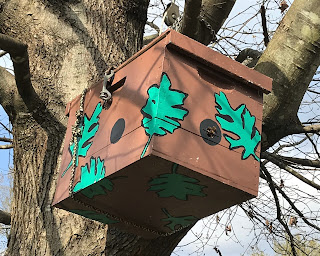The queen bee doesn’t have any royal duties. Thousands of bees
in her hive don’t even pay her much attention; a dozen workers attend to her.
The rest of the workers go about tending to the hive, feeding the brood, and producing
their future food supply. The queen just lays eggs and secretes pheromones, and
her pheromones organize the colony. It’s quickly apparent to the bees if she’s
gone. The queen, drones, and workers produce many pheromones as their principal
means of communication. Most are aromatic scents that the bees detect and react
upon. One pheromone the queen produces, that we call “queen substance,” is conveyed
to the workers by touch rather than by scent. The queen secretes queen
substance pheromone, and her retinue of attendants collect it by stroking her
body. They pass the pheromone to other bees in the vicinity, and then it is
passed from bee to bee throughout the hive. As long as queen substance is
detected by the bees, the colony is content. If the queen dies, or the
beekeeper removes her from the hive, the bees will know within one hour that she
is gone by the loss of queen substance.
The amount of queen substance pheromone in the hive diminishes
as it is divided among an increasing number of bees as the colony’s population grows
in the spring. Reduced queen pheromone stimulates the workers to start building
queen cells, one of the first steps involved in swarming. The queen lays eggs
in these, and the workers feed the developing queens a high-energy brood food,
called royal jelly. A queen will emerge from one cell to take over the
egg-laying duties of the hive when the colony divides through swarming. Half of
the hive’s bees and the older queen fly from the hive and gather nearby. Scouts,
seen here, visit my swarm trap. They explore the cavity and find it suitable.
In a day the swarm moves in, and I transfer it to a hive.
--Richard





No comments:
Post a Comment